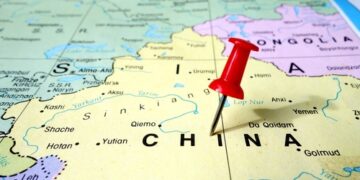Satellite observations analyzed data
 Recent years have brought unprecedented melting to Arctic sea ice, the white cap that covers the far north. Now, months before the sea ice reaches its annual minimum extent, this summer looks likely to follow suit, bringing unusually ice-free waters.
Recent years have brought unprecedented melting to Arctic sea ice, the white cap that covers the far north. Now, months before the sea ice reaches its annual minimum extent, this summer looks likely to follow suit, bringing unusually ice-free waters.
Satellite observations analyzed by the U.S. National Snow and Ice Data Center show the extent of the sea ice hovering below the baseline, the average between 1979 and 2000, for most of the spring and dipping particularly low in June.
“It definitely portends a low-ice year, whether it means it will go below 2007 (the record minimum in September), it is too early to tell,” Meier said.
The sea ice undergoes a seasonal cycle, spreading across the Arctic waters during winter and retreating in the warmth of summer. Historically, the ice – which provides important habitat for walrus and polar bears – reaches its minimum extent between the first week of September and around the end of the third week of the month, according to Walt Meier, a research scientist at NSIDC.
Recent years rank as the lowest on record since continuous record-keeping began in 1979, and scientists blame a combination of natural weather fluctuations, such as wind patterns, and global warming caused by the greenhouse gases humans emit. [Gallery: Polar Bears Swimming in the Arctic]
Wind patterns, water flow through the Bering Strait, the cloudiness of the skies, the amount of snowfall and the presence of soot this summer could all influence the rate of melt. So, it’s not possible to make a definitive prediction for ice coverage later in the season, according to Meier.
“We are seeing a lot of areas opening up within the Arctic Ocean, and along coastlines that normally are still ice covered,” Meier said. “This time of year is potentially significant because we are approaching the summer solstice where the sun is at its maximum in the Northern Hemisphere.”
The tilt of the Earth’s axis means the sun does not set above the Arctic Circle on the summer solstice, with summer days growing longer even farther north. As a result, the more dark water exposed to sunlight around this time, the more heat it can soak up.
“In a way it is almost like building up a bank account of heat,” Meier said.
As summer progresses the sun spends less and less time in the sky over the Arctic, but heat stored in the water allows the melting to continue.
Low sea ice cover is also a sign of the thinner ice, which is more vulnerable to summer melt. Recent observations have shown a marked loss in the older, thicker sea ice, Meier said.
Scientists attribute the unprecedented lows in sea ice in recent years in part to global warming caused by humans’ greenhouse gas emissions.
The extent of Arctic sea ice matters for a number of reasons. Declines pose problems for Arctic wildlife. There is evidence more open water is forcing polar bears to swim vast distances and causing walruses to crowd together on beaches in massive numbers.
A significant loss of sea ice can also aggravate global warming through what is known as the albedo effect. White ice reflects much of the sun’s energy back out into space, while dark water absorbs it, bringing more heat into the natural system.
The NSIDC records rank Sept. 16, 2007, as the date of the lowest extent on record, with Sept. 9, 2011, as the second lowest on record. A German group, based at the University of Bremen, used different satellite data to come up with a conflicting result, naming Sept. 8, 2011, as the lowest extent on record.
Source: Huffington Post



























































